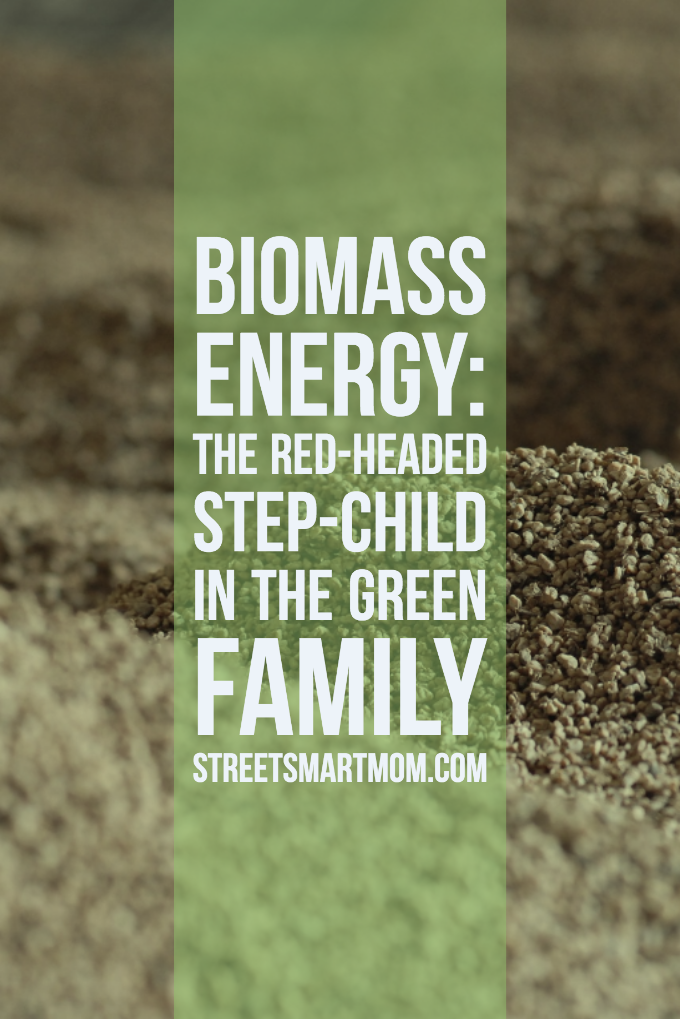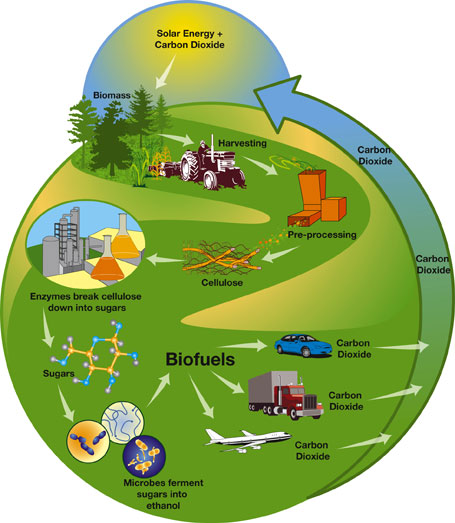Biomass Energy—The Red-Headed Step-Child In The Green Family
Hey Smart Moms!
I don’t know about you, but I had never actually heard of biomass energy.
Surprisingly, it is actually the one form of energy humankind is most familiar with in our long history of creating energy!
From the very first person to create fire, we have been using biopower.
Quite simply, it comes from burning plants or animal waste.
So why don’t we talk about or even know much about this very common renewable form of energy?
How does biomass energy work?
I think it doesn’t get a lot of attention because there seems to be a lot of “scary” things around it.
We think of burning and we think of pollution, deforestation, these images of little deer and monkeys running for their lives as we burn down their homes for our hot shower. Fern Gully, anyone?
The thing is, it’s nothing like that. At least, it doesn’t have to be.
Then I began thinking, “well if it just burns it’s putting out carbon dioxide same as fossil fuels, right?”
No!
Or, again, it doesn’t have to.
Fossil fuels release carbon dioxide captured by plants millions of years ago, putting “new” carbon dioxide into the air when they are burnt. They are putting back more than they are taking out. Biomass basically negates itself. It burns energy already absorbed by current plants, and then puts it back into the air at the same rate. It balances itself out. (2)
Confused? So was I. Let’s go back a bit and I’ll explain how this works.
Plants capture the energy of the sun through photosynthesis (welcome back to third grade). The chlorophyll in the plants converts carbon dioxide from the air and water into carbohydrates, which are complex compounds of oxygen, hydrogen, and carbon. When the compounds are burned, they break down into the singular forms. Those forms release the energy gathered from the sun. (1) And that is how the energy is created!
So as long as we are creating new plants to replace the ones we take at a fast enough rate, the carbon dioxide/greenhouse gases will be negated. (3) This is how biomass is a green energy and a potential renewable energy source.
However, if we aren’t careful, it can create a carbon penalty. It can pollute our air, create greenhouse gas emissions, destroy our ecosystems and all that (basically the same as fossil fuels). Which is why it’s important that the resource crop needed is grown on land that has already been cleared (such as farm land) and are replaced in the proper time frame.
Main sources of biopower are plants, paper mill residue, scrap from lumber mills, and municipal/industrial waste. Likely in the future, fast-growing trees, grasses, as well as algae, will be used. (2)
What can biomass power be used for?
So it’s a good thing we can create good things out of this. Biomass is readily available and handy. Biomass energy is quite versatile. It is utilized for heat, electricity, and liquid/gaseous fuels.
Chemical energy is converted to heat via burning materials. Ie. burning logs at a campfire. So you have energy in the form of heat. (4)
Biomass can also be converted to biopower and biofuels. Liquid fuels can be used for transportation and gaseous/liquid fuels can burn more efficiently to generate better electricity (better than fossil fuels). This can reduce dependency on foreign oil. Because biofuel is the only renewable liquid transportation fuel. (2)
Imagine that! It kind of answers a lot of economic and political problems, I think.
Electricity is generated and transferred to consumers via transmission systems. These can be used with small-scale issues such as powering a stove, or large scale issues such as general electric distribution.
Biomass power is typically used to create chemicals and petroleum based materials. Such as plastic. (2) While I don’t think plastics are that great for the environment and can be problematic in and of themselves…it is pretty cool that we can create other useful materials out of biomass energy.
How are biomass power plants developed?
There seem to be five main types of biomass plants or plants that use or convert biomass energy.
These facilities are biomass power plants, biodiesel production plants, ethanol production plants, landfill gas collection systems, and biogas production plants. (4)
Biomass Plants (4):
- Biomass Power Plants: Plants which use biomass materials to create heat or steam.
- Biodiesel Production Plants: Plants which create biodegradable fuels used in diesel engines.
- Ethanol Production Plants: Plants which create the ethanol used in gasoline from converting biomass.
- Landfill Gas Collection Systems: Plants which create gas from landfill material wastes.
- Biogas Production Plants: Plants which, using anaerobic digestion, create methane from waste (human, animal, food).
(And for our more visual learners)
What are potential problems?
We covered the importance of carefully managing biomass energy. It can wreak havoc on ecosystems and create air pollution. And that means greenhouse gases. It can also use up a lot of water. Which can be damaging for drought years (there are already water problems all over the world).
It is so important that we responsibly harness that power. We can’t just go around chopping grass and trees for energy. Otherwise, what will we have left? A burning, ashy planet. The exact opposite of what renewable energy is trying to do.
It is important that we don’t use just any biomass fuel. Biomass energy resources need to be grown specifically and harvested carefully. That will to negate the carbon dioxide output.
I guess this is why I named bioenergy the red-headed step-child of the green energy family.
The things is, it’s fantastic and full of potential but maybe people dismiss it because they see it as potentially harmful or they don’t understand it.
Why biomass energy?
While biomass seems to be the least “green” of the renewable resources, it is indeed renewable with the chance to be green.
Though it has potential problems that could be harmful, it would be easy enough to manage and keep track of changes and patterns in order to tweak things into a well-organized, safe way to access this renewable energy resource.
Biopower has the potential to be a safe, clean, sustainable energy for our planet in the future. And I think it is just neat!
Sources/Resources:
(2) http://www.nrel.gov/workingwithus/re-biomass.html
(3) http://www.renewableenergyworld.com/bioenergy/tech.html
(4) http://teeic.indianaffairs.gov/er/biomass/restech/uses/index.htm




